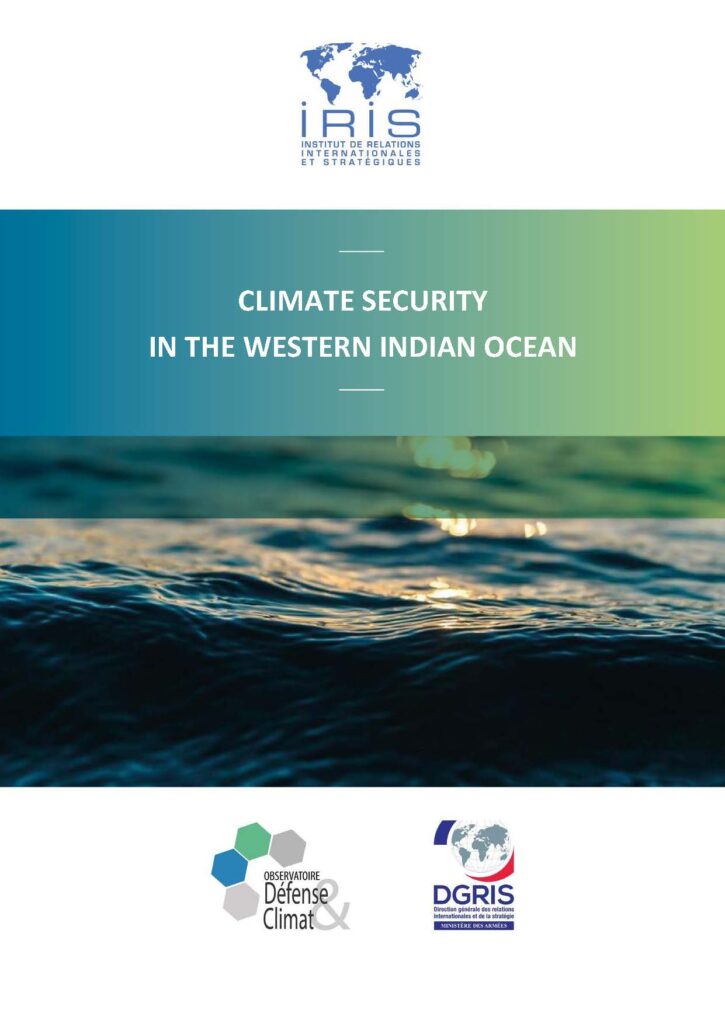Notes / Observatoire Défense et Climat
30 septembre 2020
Climate Security in the Western Indian Ocean

The Indian Ocean (IO) is a strategic area, whose importance significatively grew since the Cold War.
Rich in natural resources, the IO is the busiest trade route worldwide. The trade flow concentration gives to maritime openings and straights a critical importance (oil and gas trade playing a major role). China’s vigorous economic growth contributed to the rapid development of littoral countries.
The United States (US) became IO’s hegemonic power in the aftermath of WWII. However, its influence tends to decrease while India and China strengthen their military capabilities and expand their presence. China developed the Belt and Road Initiative (BRI) since 2013, which aims to increase trade flows to and from China through a series of trade partnerships and massive investments in foreign transport infrastructures. This growing influence generates concerns and counter-balancing attempts. The US and India, seeking to maintain their presence over the IO, reinforced their cooperation. The competition between India and China leads to a race for access to overseas military bases, civil facilities and market shares in transport infrastructures…



